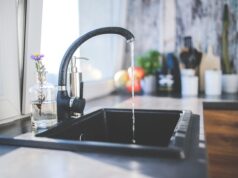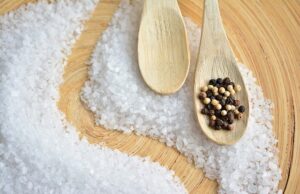Contents
From Drainage to Supply: Exploring the Complex Network of Pipes Under Your Kitchen Sink
Have you ever wondered about the intricate system of pipes that lie just beneath the surface of your kitchen sink? These pipes are responsible for transporting both water and waste to and from your home’s plumbing system. Understanding the basics of this system can help you maintain a healthy and functional kitchen.
At the heart of this system lies the drain, typically located at the center of your sink. From there, wastewater flows down a pipe and into the larger network of pipes that make up your home’s plumbing system. The drainage system is designed to prevent clogs and keep water flowing smoothly.
On the other side of the sink, you’ll find the supply system which is responsible for providing fresh water to your home. This system is comprised of pipes that bring water into your home from a main supply line. The supply system is also responsible for regulating water pressure to ensure that your kitchen fixtures function properly.
In addition to the drainage and supply systems, there are a number of other pipes and components that play a critical role in the overall plumbing of your kitchen. These may include traps, connectors, valves, and other specialized components that work together to ensure that your sinks and other fixtures function as they should.
Overall, the network of pipes beneath your kitchen sink is a complex and essential part of your home’s plumbing system. By understanding how it works and keeping up with maintenance tasks, you can ensure that your kitchen remains functioning properly for years to come.
From drainage to supply: Exploring the complex network of pipes under your kitchen sink
Understanding the different types of pipes
There are various types of pipes used under the kitchen sink, each with a specific function.
Drain pipes are used to carry wastewater away from the sink to the main sewer line or septic tank. They are typically made of PVC or ABS plastic, and come in different diameters depending on the size of the sink and the expected flow rate.
Supply pipes, on the other hand, bring clean water from the main water line or well to the faucet. They can be made of copper, PEX, or CPVC, and may come in different sizes and lengths depending on the distance between the sink and the source of water.
The importance of proper installation
Proper installation of kitchen sink pipes is crucial to ensure proper function and prevent leaks, clogs, or water damage.
Drain pipes should be sloped downward at a minimum of 1/4 inch per foot to ensure proper drainage and prevent blockages. They should also be supported with straps or hangers every 4 feet to prevent sagging or bending.
Supply pipes should be installed with shut-off valves near the sink to allow for easy maintenance or repair. They should also be protected from freezing or corrosion by insulation or chemical treatments.
Common problems and solutions
Despite proper installation, kitchen sink pipes can still encounter problems that require attention from a plumber or DIY homeowner. Here are some common issues and their solutions:
Clogs: Clogs in drain pipes can be caused by food scraps, grease, or foreign objects. They can be cleared with a plunger, drain snake, or chemical cleaner. However, severe clogs may require professional help.
Leaks: Leaks in supply or drain pipes can be caused by corrosion, improper installation, or damaged fittings. They can be fixed by replacing the damaged section of pipe, tightening loose connections, or applying sealants.
Low water pressure: Low water pressure in supply pipes can be caused by a clog, a faulty valve, or poor water supply from the source. It can be improved by cleaning the aerator, replacing the valve, or contacting the water provider.
Conclusion
The network of pipes under your kitchen sink plays a crucial part in your daily routine, from washing dishes to cooking meals. By understanding the different types of pipes, the importance of proper installation, and the common problems and solutions, you can maintain a smooth and seamless flow of water and waste in your kitchen.
For more information on kitchen sink pipes, check out this helpful article from The Spruce: https://www.thespruce.com/kitchen-sink-pipes-2718802.
FAQs – From Drainage to Supply: Exploring the Complex Network of Pipes Under Your Kitchen Sink
What is the purpose of the pipes under my kitchen sink?
The pipes under your kitchen sink serve a variety of purposes. They are responsible for draining water and waste from your sink, supplying water to your faucet, and connecting to your dishwasher, garbage disposal, and other kitchen appliances.
Why are there so many pipes under my kitchen sink?
The network of pipes under your kitchen sink can seem overwhelming, but each pipe plays a critical role in the overall function of your kitchen’s water and waste management system. Different pipes are responsible for different tasks, such as carrying hot or cold water, draining wastewater, or venting air out of the system.
What should I do if there is a leak in one of the pipes?
If you notice a leak in one of the pipes under your kitchen sink, it’s important to address it right away. Depending on the severity of the leak, you may be able to fix it yourself with a pipe wrench and some plumber’s tape. However, if the leak is more serious, it’s best to call a licensed plumber to assess the problem and provide a solution.
How often should I have the pipes under my kitchen sink inspected?
It’s a good idea to have the pipes under your kitchen sink inspected by a professional plumber on a regular basis. Depending on the age and condition of your pipes, you may want to schedule an inspection every year or two to ensure that everything is functioning properly and to catch any potential problems before they turn into major issues.
Understanding the Pipes Under Your Kitchen Sink
If you’re like most homeowners, you may not have given much thought to the pipes running under your kitchen sink. However, these pipes are essential to the proper functioning of your home’s plumbing system, and understanding how they work can help you identify and fix any problems that may arise.
The Different Pipes Under Your Kitchen Sink
There are several different types of pipes that you may find under your kitchen sink:
- Supply pipes: These pipes bring water into your home.
- Drain pipes: These pipes carry wastewater away from your home.
- P-trap: This is a curved pipe that traps standing water to prevent sewer gas from entering your home.
Common Problems with Kitchen Sink Pipes
There are a few common issues that you may encounter with the pipes under your kitchen sink:
- Clogs: Food particles, grease, and other debris can accumulate in your drain pipes, leading to clogs and slow draining water.
- Leaks: Over time, the pipes under your sink can become corroded or damaged, leading to leaks that can cause water damage to your home.
- Odors: If your P-trap dries out, it can allow sewer gas to enter your home, leading to unpleasant odors.
If you’re experiencing any of these issues, it’s important to call a professional plumber to address the situation as soon as possible.
Conclusion
Now that you have a better understanding of the pipes under your kitchen sink, you can take steps to properly maintain them and address any issues as they arise. By doing so, you can ensure that your home’s plumbing system remains in good working condition for years to come.
For more information on kitchen sink pipes, check out this Wikipedia page.
From Drainage to Supply: Exploring the Complex Network of Pipes Under Your Kitchen Sink
Overview:
- A kitchen sink has a complex network of pipes that serve the purpose of draining and supplying water.
- These pipes are interconnected and work together to ensure proper functioning of the sink.
- Understanding this network of pipes can help homeowners identify and solve potential plumbing issues.
Drainage:
- The drainage system of a sink includes the drain stack, P-trap, and the drainage pipes.
- The drain stack is a vertical pipe that collects wastewater and carries it to the main sewer line.
- The P-trap is a curved pipe that prevents sewer gas from entering the home and collects debris that could clog the drain.
- The drainage pipes connect the sink to the drain stack and carry the wastewater away from the sink.
Supply:
- The supply system of a sink includes the supply lines, shut-off valves, and faucets.
- The supply lines are pipes that bring clean water to the sink.
- The shut-off valves control the flow of water and allow for repairs or maintenance to be carried out.
- The faucet dispenses water and controls the temperature and flow of water.
Maintenance:
- To ensure proper functioning of a sink, regular maintenance is required.
- This includes cleaning the P-trap, checking for leaks, and replacing worn-out parts such as rubber washers and gaskets.
- Any plumbing issues should be addressed promptly to prevent further damage or costly repairs.


































